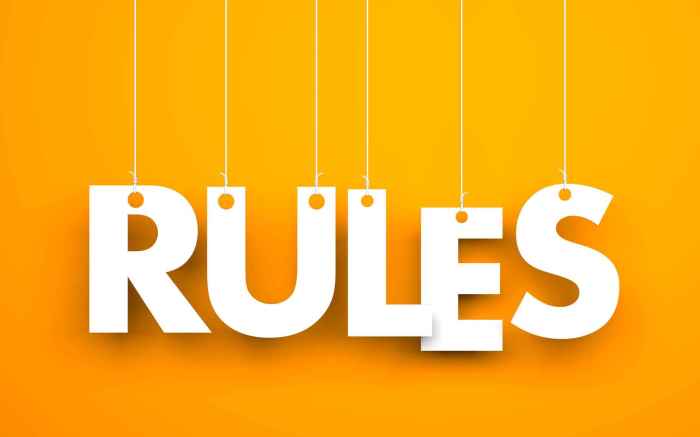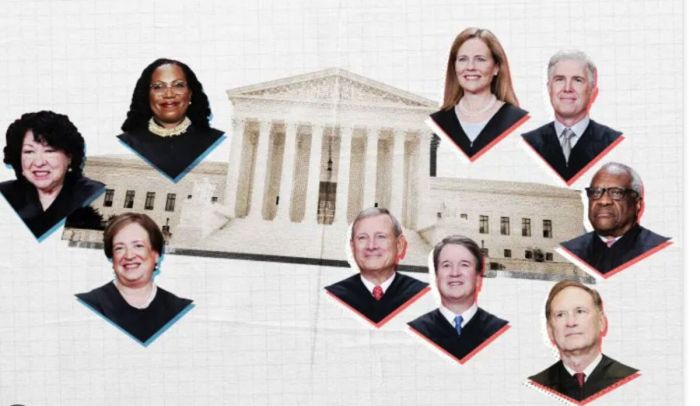
What is the law? This fundamental question has captivated thinkers for centuries, shaping societies and guiding human interactions. From the ancient codes of Hammurabi to the modern legal systems of today, law has evolved to address the complexities of human existence, defining what is right and wrong, and establishing a framework for order and justice.
This exploration delves into the essence of law, examining its various definitions, theories, and functions. We’ll explore the sources of law, from constitutions and statutes to judicial precedents and international agreements. We’ll also examine the different branches of law, including criminal, civil, constitutional, and administrative law, and understand how they operate within a legal system.
The Concept of Law
The concept of law is fundamental to human society, providing a framework for order, justice, and the protection of individual rights. Understanding the different definitions, theories, and functions of law is essential for comprehending its role in shaping our lives and interactions.
Definitions of Law
The definition of law has evolved over time, reflecting changing societal values and legal philosophies. While there is no single universally accepted definition, several key perspectives offer insights into its nature and purpose.
- Formal Definition: Law can be defined as a set of rules and regulations that are enforced by a governing authority, typically a state or nation. These rules are designed to maintain order, protect rights, and resolve disputes within society.
- Substantive Definition: This perspective emphasizes the content of law, focusing on the principles and values that underlie legal rules. It considers law as a system of justice and fairness, aiming to promote the common good and protect individual interests.
- Functional Definition: This view focuses on the role and purpose of law in society. It defines law as a tool for regulating behavior, resolving conflicts, and achieving social goals. This perspective highlights the practical application of legal principles in everyday life.
Theories of Law
Various theories have been developed to explain the nature and origin of law. These theories offer different perspectives on how legal rules are created, interpreted, and enforced.
- Natural Law: This theory holds that law is based on inherent moral principles that are discoverable through reason and human experience. Natural law theorists argue that positive laws (laws enacted by governments) must conform to these universal moral principles to be just and valid. Examples of natural law principles include the right to life, liberty, and property.
- Legal Positivism: This theory emphasizes the role of positive law, arguing that law is simply what is enacted by a sovereign authority. Legal positivists reject the notion of natural law, focusing instead on the formal procedures and institutions that create and enforce legal rules. They argue that law is separate from morality and that its validity depends solely on its source and form.
- Legal Realism: This theory challenges the traditional view of law as a purely objective and logical system. Legal realists argue that law is not merely a set of abstract rules but rather a dynamic and evolving process influenced by social, economic, and political factors. They emphasize the role of judges in shaping the law through their interpretations and decisions.
Functions of Law in Society
Law plays a crucial role in maintaining order, protecting rights, and resolving disputes within society. Its functions are interconnected and essential for the smooth functioning of any community.
- Maintaining Order: Law provides a framework for regulating behavior and preventing chaos. By setting clear rules and consequences for violations, it helps create a predictable and orderly society. Examples include traffic laws, criminal codes, and property rights regulations.
- Protecting Rights: Law safeguards individual rights and freedoms, ensuring that citizens are treated fairly and with respect. It protects against arbitrary power and ensures that individuals can pursue their interests without undue interference. Examples include freedom of speech, freedom of religion, and the right to due process.
- Resolving Disputes: Law provides a mechanism for resolving conflicts and disputes peacefully and fairly. Through courts and other legal institutions, it allows individuals to seek redress for grievances and obtain impartial judgments. Examples include civil lawsuits, criminal trials, and mediation proceedings.
Sources of Law
The foundation of any legal system lies in its sources of law, which provide the rules and principles that govern society. These sources serve as the foundation for legal interpretation, application, and enforcement.
Primary Sources of Law
Primary sources of law are the fundamental building blocks of a legal system, providing the actual rules and principles that govern legal matters. These sources are directly binding and authoritative.
- Constitutions: Constitutions are considered the supreme law of the land, establishing the fundamental principles and structure of government. They define the powers and limitations of different branches of government, protect individual rights, and Artikel the process for amending the constitution. For example, the U.S. Constitution establishes a system of checks and balances among the legislative, executive, and judicial branches, guarantees fundamental rights like freedom of speech and religion, and provides the framework for amendments.
- Statutes: Statutes are laws enacted by legislative bodies, such as Congress in the United States or Parliament in the United Kingdom. These laws cover a wide range of subjects, from criminal offenses to environmental protection, and are typically codified in a systematic manner. For instance, the Clean Air Act in the United States sets standards for air quality and regulates emissions from industries.
- Regulations: Regulations are rules issued by administrative agencies to implement and enforce statutes. These agencies have expertise in specific areas and are empowered to create detailed rules to achieve the goals of the statute. For example, the Environmental Protection Agency (EPA) issues regulations to implement the Clean Air Act, setting specific limits on pollutants and requiring industries to obtain permits.
- Case Law: Case law, also known as common law, is derived from judicial decisions in previous cases. In common law systems, judges are bound by the principle of stare decisis, which means they must follow precedents set by higher courts in similar cases. Case law plays a crucial role in interpreting statutes, filling gaps in the law, and adapting legal principles to changing circumstances. For example, the landmark Supreme Court case Brown v. Board of Education (1954) overturned the precedent of separate but equal facilities for black and white students, leading to desegregation in public schools.
The Process of Legislation
The process of creating new laws is a complex and often lengthy one, involving various stages of deliberation, debate, and approval.
- Introduction of a Bill: The process begins with a proposed law, called a bill, being introduced in the legislature. This bill can be introduced by a member of the legislature or by the executive branch. The bill is then assigned to a relevant committee for review and consideration.
- Committee Review and Consideration: The committee holds hearings and debates on the bill, inviting experts and stakeholders to provide input. The committee may amend the bill or recommend its rejection. If the committee approves the bill, it is sent to the full legislature for debate.
- Legislative Debate and Amendment: The bill is debated in the full legislature, with members offering amendments and proposing changes. This stage can involve significant debate and negotiation, particularly on controversial issues.
- Vote and Approval: After debate, the legislature votes on the bill. If the bill is approved by a majority vote, it is sent to the other chamber of the legislature for consideration. If both chambers approve the bill, it is sent to the executive branch for signature.
- Executive Review and Signature: The executive branch, typically a president or governor, reviews the bill and has the power to sign it into law. If the executive branch approves the bill, it becomes law. However, the executive branch can also veto the bill, sending it back to the legislature for reconsideration.
Judicial Precedent in Common Law Systems
Judicial precedent, also known as stare decisis, is a fundamental principle in common law systems. It ensures consistency and predictability in legal rulings by requiring judges to follow precedents set by higher courts in similar cases.
- Binding Precedents: Decisions of higher courts within a jurisdiction are binding on lower courts, meaning they must follow the legal principles established in those decisions. This ensures consistency in the application of law across different cases.
- Persuasive Precedents: Decisions of courts in other jurisdictions or lower courts can serve as persuasive precedents, meaning they can influence the judge’s decision but are not binding. These precedents can provide guidance and insight into the legal principles at play.
- Distinguishing Precedents: Judges can distinguish a current case from previous precedents if they find that the facts or legal issues are sufficiently different. This allows judges to adapt the law to changing circumstances while still respecting the principle of stare decisis.
International Law and its Influence on Domestic Legal Systems
International law refers to the rules and principles governing the relationships between states and other international actors. While international law is not directly enforceable in domestic courts, it can have a significant influence on domestic legal systems.
- Treaty Obligations: States may enter into treaties, which are legally binding agreements between countries. These treaties can create obligations for states to comply with certain rules or principles, which may then be incorporated into domestic law. For example, the United Nations Convention on the Rights of the Child has been ratified by many countries, leading to the incorporation of child protection laws into domestic legal systems.
- Customary International Law: Certain practices and principles have become accepted as customary international law, meaning they are binding on all states regardless of whether they have formally agreed to them. For example, the principle of non-intervention in the internal affairs of other states is considered customary international law.
- International Organizations: International organizations, such as the United Nations and the World Trade Organization, develop rules and standards that can influence domestic law. For example, the WTO’s rules on trade have been incorporated into the domestic laws of many countries, influencing their trade policies.
Branches of Law

The legal system is vast and complex, encompassing a wide range of laws that govern various aspects of society. To make sense of this intricate web, legal scholars and practitioners have categorized laws into different branches, each focusing on specific areas of human activity and societal interaction. These branches help to organize and streamline the application of legal principles, making it easier to understand and navigate the legal landscape.
Types of Law, What is the law
The major branches of law can be broadly categorized into two main types: public law and private law.
Public law governs the relationship between individuals and the state. It focuses on the powers and responsibilities of the government, the rights and obligations of citizens, and the structure and functioning of public institutions. Examples of public law include constitutional law, administrative law, criminal law, and international law.
Private law, on the other hand, deals with the legal relationships between individuals, businesses, and other private entities. It encompasses areas like contract law, property law, tort law, and family law. Private law aims to regulate private affairs, protect individual rights, and facilitate peaceful resolution of disputes between private parties.
Criminal Law
Criminal law deals with offenses against the state or society as a whole. It aims to protect public safety, maintain order, and deter criminal behavior. Key areas of focus in criminal law include:
* Crimes against persons: These include offenses like murder, assault, rape, and kidnapping.
* Crimes against property: Examples include theft, robbery, burglary, and arson.
* Crimes against the state: This category encompasses offenses such as treason, sedition, and espionage.
* White-collar crimes: These are non-violent crimes committed by individuals or businesses for financial gain, such as fraud, embezzlement, and money laundering.
Key Legal Principles
* Actus reus: The guilty act, meaning the physical act of committing the crime.
* Mens rea: The guilty mind, meaning the mental state of the perpetrator, such as intent, knowledge, or recklessness.
* Beyond a reasonable doubt: The standard of proof required in criminal cases, meaning the prosecution must prove the defendant’s guilt to a very high degree of certainty.
Examples
* Murder: The unlawful killing of another human being with malice aforethought.
* Theft: The unlawful taking of another person’s property with the intent to permanently deprive them of it.
* Fraud: The intentional misrepresentation of facts to deceive another person for financial gain.
Civil Law
Civil law deals with disputes between private individuals, businesses, or organizations. It aims to resolve conflicts, enforce contracts, and protect private rights. Key areas of focus in civil law include:
* Contract law: Governs agreements between parties, ensuring that promises are kept and breaches are remedied.
* Tort law: Deals with civil wrongs, such as negligence, intentional infliction of emotional distress, and defamation.
* Property law: Regulates ownership and use of real and personal property, including land, buildings, and personal belongings.
* Family law: Addresses matters related to marriage, divorce, child custody, and adoption.
Key Legal Principles
* Preponderance of the evidence: The standard of proof in civil cases, meaning the plaintiff must prove their case more likely than not.
* Damages: Monetary compensation awarded to the injured party for losses suffered due to the defendant’s actions.
* Equitable remedies: Non-monetary relief, such as injunctions or specific performance, used to address situations where monetary damages are inadequate.
Examples
* Breach of contract: Failure to fulfill the terms of a legally binding agreement.
* Negligence: Failure to exercise reasonable care, resulting in harm to another person.
* Divorce: Legal termination of a marriage.
Constitutional Law
Constitutional law focuses on the interpretation and application of the Constitution, the supreme law of the land. It establishes the framework of government, defines fundamental rights and freedoms, and limits the power of the state. Key areas of focus in constitutional law include:
* Separation of powers: The division of governmental authority between the legislative, executive, and judicial branches.
* Federalism: The division of powers between the federal government and state governments.
* Individual rights: Protection of fundamental freedoms such as freedom of speech, religion, and assembly.
* Judicial review: The power of the courts to strike down laws or actions that violate the Constitution.
Key Legal Principles
* Supremacy Clause: The Constitution is the supreme law of the land, and any state law that conflicts with it is invalid.
* Due process of law: The government must follow fair and reasonable procedures when depriving individuals of life, liberty, or property.
* Equal protection of the laws: All persons are entitled to equal protection under the law, regardless of race, religion, gender, or other protected characteristics.
Examples
* Brown v. Board of Education: Landmark case that declared state-sponsored segregation in public schools unconstitutional.
* Roe v. Wade: Established a woman’s right to abortion under the right to privacy.
* Marbury v. Madison: Established the principle of judicial review.
Administrative Law
Administrative law governs the activities of government agencies and their relationship with the public. It ensures that agencies act within their authority, follow proper procedures, and are accountable for their actions. Key areas of focus in administrative law include:
* Agency rulemaking: The process by which agencies create regulations to implement laws.
* Agency adjudication: The process by which agencies resolve disputes involving their regulations.
* Judicial review of agency actions: The power of courts to review agency decisions to ensure they are lawful.
Key Legal Principles
* Administrative Procedure Act (APA): Federal law that establishes procedures for agency rulemaking, adjudication, and judicial review.
* Chevron deference: Courts generally defer to an agency’s interpretation of its own regulations if the interpretation is reasonable.
* Exhaustion of administrative remedies: Individuals must typically exhaust all available administrative remedies before seeking judicial review of an agency decision.
Examples
* Environmental Protection Agency (EPA): Regulates air and water pollution, hazardous waste, and other environmental issues.
* Food and Drug Administration (FDA): Regulates the safety and efficacy of food, drugs, and medical devices.
* Federal Communications Commission (FCC): Regulates broadcasting, telecommunications, and the internet.
The Legal System
The legal system is the framework that governs how laws are created, interpreted, and enforced. It is essential for maintaining order and justice in society. This section will delve into the structure of the legal system in the United States, exploring the roles of key legal professionals and the stages of a legal proceeding.
Structure of the US Legal System
The United States has a dual court system, meaning there are both federal and state courts. The federal court system is comprised of three levels: district courts, courts of appeal, and the Supreme Court. State courts are organized similarly, with trial courts, intermediate appellate courts, and a state supreme court.
Roles of Legal Professionals
- Judges: Judges preside over court proceedings, interpret the law, and make rulings on legal issues. They are responsible for ensuring fairness and impartiality in the courtroom.
- Lawyers: Lawyers represent clients in legal matters, providing advice, advocating for their interests, and representing them in court. They can specialize in various areas of law, such as criminal defense, civil litigation, or family law.
- Prosecutors: Prosecutors represent the government in criminal cases, bringing charges against individuals accused of crimes. They have the responsibility of proving the defendant’s guilt beyond a reasonable doubt.
Stages of a Legal Proceeding
A legal proceeding typically follows a series of stages:
- Filing a Complaint: The first step in a legal proceeding is filing a complaint, which Artikels the legal claims and allegations of the plaintiff.
- Service of Process: Once a complaint is filed, the defendant must be formally notified of the lawsuit. This is known as service of process.
- Discovery: During discovery, both parties gather information and evidence related to the case. This can involve requests for documents, depositions, and interrogatories.
- Pretrial Motions: Both parties may file motions to resolve specific legal issues before trial, such as motions to dismiss or motions for summary judgment.
- Trial: If the case proceeds to trial, evidence is presented, witnesses are examined, and the jury (or judge in a bench trial) makes a decision based on the evidence.
- Judgment: After the trial, the court issues a judgment in favor of one party or the other.
- Appeal: The losing party may appeal the judgment to a higher court, arguing that the lower court made an error in its decision.
Examples of the Legal System in Practice
- Criminal Case: A person accused of robbery would be arrested and charged with a crime. The prosecutor would present evidence to a jury, and the defendant’s lawyer would argue their case. If found guilty, the defendant could be sentenced to prison.
- Civil Case: A person injured in a car accident could sue the other driver for damages. The plaintiff’s lawyer would present evidence of the accident and the driver’s negligence, while the defendant’s lawyer would argue that the accident was not their fault.
Legal Interpretation

Legal interpretation is the process of determining the meaning of legal texts, such as statutes, regulations, and contracts. This is a crucial aspect of the legal system, as it allows judges and lawyers to apply the law to specific cases and resolve disputes.
Methods of Legal Interpretation
Judges and lawyers employ various methods to interpret legal texts, aiming to understand the intent of the drafters and apply the law fairly and consistently.
- Plain Meaning Rule: This method emphasizes the literal meaning of the words used in the text, assuming that the drafters intended the ordinary and natural meaning of the words they used. It’s a starting point for interpretation, often applied when the language is clear and unambiguous.
- Legislative Intent: This method seeks to understand the purpose and intent of the legislature when drafting the law. It involves examining legislative history, including committee reports, debates, and amendments, to determine the intended scope and application of the law.
- Purposeful Interpretation: This method focuses on the purpose and underlying rationale behind the law, seeking to apply the law in a way that fulfills its intended goal. It considers the context and the problem the law seeks to address.
- Canons of Construction: These are established rules and principles that guide the interpretation of legal texts. They provide guidance on resolving ambiguities, such as the rule against surplusage, which assumes that every word in a statute has a meaning and should be given effect.
Statutory Interpretation
Statutory interpretation is the process of determining the meaning of statutes enacted by legislatures. It involves analyzing the text of the statute, considering its legislative history, and applying relevant canons of construction.
- Textual Analysis: This involves examining the words of the statute and their grammatical structure. It aims to determine the plain meaning of the words used, considering their context and the overall structure of the statute.
- Legislative History: This refers to the records of the legislative process, including committee reports, debates, and amendments. It can provide insights into the intent and purpose of the legislature when drafting the statute.
- Canons of Construction: These are established rules and principles that guide the interpretation of statutes. They provide guidance on resolving ambiguities and ensuring consistency in the application of the law.
Precedent and Stare Decisis
The doctrine of stare decisis is a cornerstone of the common law system, emphasizing the importance of following precedent. It promotes consistency and predictability in the application of the law, ensuring that similar cases are decided similarly.
- Binding Precedent: Decisions of higher courts within the same jurisdiction are binding on lower courts. This means that lower courts must follow the rulings of higher courts on similar legal issues.
- Persuasive Precedent: Decisions of courts in other jurisdictions or of lower courts within the same jurisdiction can be persuasive but are not binding. They can be considered for their reasoning and analysis, but judges are not obligated to follow them.
- Distinguishing Precedent: Judges can distinguish a case from precedent if they find that the facts or legal issues are sufficiently different. This allows judges to adapt the law to new circumstances while still maintaining the principle of stare decisis.
Hypothetical Case Study
Imagine a case where a company, “Tech Solutions,” has developed a new software program that allows users to track their personal finances. The program collects data on users’ income, expenses, and financial transactions. A consumer advocacy group, “Consumer Watch,” files a lawsuit against Tech Solutions, alleging that the program violates users’ privacy rights by collecting and storing sensitive financial data without their informed consent.
- Legal Arguments for Consumer Watch:
- They could argue that the program violates users’ privacy rights under existing privacy laws, such as the General Data Protection Regulation (GDPR) or the California Consumer Privacy Act (CCPA), which restrict the collection and use of personal data.
- They could argue that the program’s terms of service are unfair and unconscionable, as they fail to adequately disclose the scope of data collection and the potential risks to users’ privacy.
- Legal Arguments for Tech Solutions:
- They could argue that the program collects only necessary data to provide its services and that users are fully informed about the data collection practices through the program’s terms of service.
- They could argue that users consent to the collection of data by agreeing to the terms of service, which includes a clear explanation of data collection practices.
The Impact of Law on Society: What Is The Law

Law plays a crucial role in shaping the fabric of society. It acts as a framework that defines acceptable behavior, protects individual rights, and promotes social order. By establishing rules and consequences, law influences how individuals interact with each other, with institutions, and with the environment.
The Role of Law in Shaping Social Norms and Values
Law plays a significant role in shaping social norms and values by setting standards of conduct and promoting certain behaviors. It does this through various mechanisms:
- Criminal Law: Criminal law defines acts that are considered harmful to society and imposes penalties on those who violate these laws. This serves as a deterrent, discouraging individuals from engaging in harmful behavior and promoting societal values such as respect for life, property, and personal safety.
- Civil Law: Civil law regulates private relationships and interactions between individuals. It establishes rules for contracts, property ownership, and personal injury. By defining legal rights and obligations, civil law promotes fairness and encourages responsible behavior in various aspects of social life.
- Constitutional Law: Constitutional law sets the fundamental principles and values that govern a society. It defines the rights and freedoms of citizens, establishes the structure of government, and limits the powers of the state. By enshrining these principles, constitutional law shapes the social fabric by promoting equality, justice, and individual liberty.
The Use of Law to Promote Social Justice and Equality
Law can be a powerful tool for promoting social justice and equality by addressing inequalities and ensuring equal treatment for all members of society. This can be achieved through:
- Anti-discrimination Laws: These laws prohibit discrimination based on race, religion, gender, sexual orientation, disability, or other protected characteristics. They aim to ensure equal opportunities and treatment in employment, housing, education, and other areas of life.
- Affirmative Action Programs: These programs aim to redress historical injustices and promote equality by providing opportunities for disadvantaged groups. They can involve preferential hiring, scholarships, or other measures to level the playing field.
- Human Rights Laws: These laws protect fundamental human rights such as the right to life, liberty, and security of person, freedom of expression, and freedom from torture. By upholding these rights, law promotes social justice and ensures that everyone is treated with dignity and respect.
Challenges and Limitations of Using Law to Address Social Problems
While law can be a powerful tool for social change, it faces certain challenges and limitations:
- Enforcement Challenges: Laws are only as effective as their enforcement. Limited resources, bureaucratic obstacles, and lack of political will can hinder the effective implementation of laws aimed at addressing social problems.
- Unintended Consequences: Laws can sometimes have unintended consequences, creating new problems or exacerbating existing ones. This can occur when laws are poorly designed or fail to consider the complex realities of social issues.
- Cultural and Social Resistance: Social change often encounters resistance from individuals, groups, or institutions that are invested in maintaining the status quo. This resistance can make it difficult to enact or enforce laws that challenge existing norms or power structures.
Case Study: Using Law to Solve the Issue of Domestic Violence
Domestic violence is a serious social problem that affects millions of people worldwide. Law has been used to address this issue through various mechanisms:
- Criminalization of Domestic Violence: Many countries have criminalized domestic violence, making it a punishable offense. This provides legal recourse for victims and allows for the prosecution of perpetrators.
- Protective Orders: Courts can issue protective orders that restrict the abuser’s contact with the victim. These orders can prohibit the abuser from entering the victim’s home, contacting the victim, or possessing firearms.
- Support Services: Laws can also provide funding for support services for victims of domestic violence, such as shelters, counseling, and legal aid. This helps victims to escape abusive situations and rebuild their lives.
End of Discussion
Understanding the law is essential for navigating our world, whether as individuals, businesses, or societies. By comprehending the principles, sources, and functions of law, we gain a deeper appreciation for its role in shaping our lives and can better engage with the legal system. As we continue to evolve and face new challenges, the law remains a vital tool for fostering order, protecting rights, and promoting justice.
Common Queries
What are the different types of legal systems?
There are two main types of legal systems: common law and civil law. Common law systems, like those in the United States and England, rely heavily on judicial precedent, while civil law systems, prevalent in Europe and Latin America, primarily rely on codified laws.
How does law differ from morality?
While law and morality often overlap, they are distinct concepts. Law represents a set of rules enforced by the state, while morality refers to personal or societal values and beliefs about right and wrong.
What is the role of the judiciary in a legal system?
The judiciary is responsible for interpreting and applying the law. Judges, who make up the judiciary, decide cases based on the facts presented and the applicable laws, ensuring consistency and fairness in the legal system.





